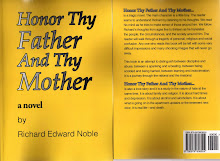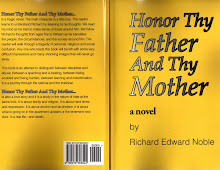
General Motors and the Sit-down Strikes, 1937
Striking America
By Richard E. Noble
The election of Franklin Delano Roosevelt in 1932 represented the biggest political event in history for the American working man. The battle that had started in the colonies and accelerated during the U.S. industrial revolution had been violently stifled by World War I and the Wilson administration. Whatever goals in crushing unions the Wilson administration didn't attempt, Hoover and the depression rejuvenated.
As unions grew, management's counter measures doubled, tripled and quadrupled. By 1932 and 1933 there were more unemployed workers and a higher percentage of unemployed than ever before in American history. Union membership was rock bottom. The unemployed were staggering in the streets, glassy eyed and impoverished. The bosses once again had the workers exactly where they wanted them, down and out, and willing to do anything. It seems that only in a democracy could a man like Roosevelt ever have been elected at a time such as this. Only in a system where the poor, the down and out and the lowest on the economic ladder had a right to participate in the choice of government could such a thing ever have happened. The rich and the powerful had it all going their way. They had Hoover in their pocket. They had plenty of gold, plenty of investment opportunities abroad and with a few more years of Hoover things might once again be the way that they should be. But the people had elected Roosevelt. They had put a union advocate in the White House. They had elected to office a "Socialist," worse yet, possibly a Communist.
Roosevelt immediately began taking labor's side in this mess. In 1935 came the Wagner Act or the National Labor Relations Act. This bill established the employees’ right to organize; to bargain collectively and challenged established anti-union management practices. Management had countered the labor movement over the last few decades with a labor movement of its own. It started company unions with mandatory membership. It hired anti-union employees. It had "goon squads" of criminals, ex-convicts, southern blacks, strikebreakers, professional spies of the Pinkerton variety and more. These tactics cost the industry upwards of 80 million dollars a year. If pro-labor or union workers were discovered in the ranks, they were fired. Disgruntled or complaining workers were fired. But the Roosevelt administration went on with emergency relief acts, unemployment compensation, old age retirement, injury insurance, job training and federal spending for job promotion. Millions were put to work all over America on improvement projects that were long over due. Everything that management had tried to accomplish over the last one hundred years to put labor in its place, the Roosevelt administration was trying to reverse. Believe it or not the government was even encouraging workers to join unions. Unions were getting braver and bolder.
The C.I.O. had been formed by John L. Lewis and friends in protest to the A.F.L. and its lack of support for immigrants and the unskilled. The C.I.O. began to make lunges into big business. Big business was the most entrenched in their policies of anti-unionism, complete with spies and goon squads.
The first attempt to organize came with Big Steel in 1937, the United States Steel Corporation. Big Steel agreed to union demands without resistance. What was going on here? This was beyond belief. Carnegie-Illinois Steel agreed to recognize the union as a bargaining agent, granted a wage increase, and established an eight hour day and a forty hour week. This company had a forty year history of anti-unionism.
Next was the "little Steel" industry; Bethlehem, Republic, Inland, and Youngstown Sheet and Tube. They would not be so cooperative. Little Steel resisted and 75,000 workers walked off their jobs. A pre-war Colorado style labor-management battle ensued - complete with hired strikebreakers, tear gas, local police and mass arrests, militia and machine guns. On May 30th Chicago police attacked three hundred pickets at the Republic plant. It was from then on known as the "Memorial Day Massacre". Little Steel won the battle, but public opinion swung to the side of the unions. The auto industry was next.
The auto industry basically consisted of General Motors, Chrysler and Ford. All three were firmly entrenched in strong well fortified anti-unionism. Their labor was for the most part unskilled and could easily be replaced. Large numbers were immigrant or migrants from the South with strong anti-labor attitudes. Speed-ups, seasonal lay-offs and the unbelievable tension of the mass production lines and their severe foremen and operators more than compensated for the automotive industry's well publicized high hourly wage.
In January 1937 an official strike against General Motors got underway. It started in Cleveland's Fisher Body Plant No.1, then No.2 in Flint, Michigan. The company had refused to bargain. The Supreme Court had been declaring pro-union laws unconstitutional; the company would take its chances and defy the Wagner Act. The strike spread until it affected sixty plants in fourteen different states and 484,711 workers. The union was employing a "new" tactic. It was called a sit-down strike. Flint, Michigan gets the historical recognition although it had been used before by female workers in the U.S. and other workers in Poland, France and elsewhere. Management was, as usual, outraged. This was a "private property" violation. Communists were obviously involved in this. The workers countered with their notion that there was no greater right than the right of a worker to a job. This was their natural right, their human right, their birth right. How could any working man ever exercise his Constitutional right to Life, Liberty, and the Pursuit of Happiness without a job?
Pure hogwash countered the Fords, DuPonts and Chryslers. Father Coughlin said John L. Lewis was a commie stooge and the Mexican Gold Shirts offered their fascists helpers to General Motors. Governor Frank Murphy was called upon by G.M. to send in the Militia. G.M. had also gone to the courts. A judge ordered the strikers out of the plants by 3 P.M. on February 3 or they would be put in prison and fined fifteen million dollars. Governor Murphy called out the National Guard to the Flint Plant. He was about to send in the troops, bayonets and all, when he decided to call John L. Lewis personally. Lewis spoke dramatically, prophesied his own death and reminded Murphy of the governor's grandfather who had been hanged after an Irish uprising. Murphy did an about face and even forbade General Motors to inhibit food delivery to the sit-down strikers. The president supported the governor's action and requested the collective bargaining discussions be resumed. The sit-down strike had lased forty-four days at an estimated cost to Pierre DuPont of $2,500,000.
It had been the sit-down that had won the day. All over the country unhappy workers began to sit down and as they did they sang their song:
When they tie the can to a union man, Sit down! Sit down!
When they give him the slack, they'll take him back, Sit down! Sit down!
When the speed up comes, just twiddle your thumbs, Sit down! Sit down!
When the boss won't talk, don't take a walk, Sit down! Sit down!
Barbers, waitress, chefs, Woolworth clerks, seamen, even wet nurses were all taking their seats on counters, cold stoves, beds and other people's private property all over America. In 1939 the Fansteel Metallurgical Corporation challenged the actions of the National Labor Relations Board resulting from firings inspired by a sit-down strike. The case reached the Supreme Court and the sit-down strike was declared a violation of private property rights and when used constituted an illegal strike.
The sit-down strike along with Governor Murphy and President Roosevelt had been successful in unionizing the auto industry. After this G.M. strike most all auto industries fell in line. All but one. Ford Motor Company.
"Labor Problems in American Industry" Carroll R. Daugherty.
"A History of American Labor" Joseph G. Rayback.
"The Glory and the Dream", William Manchester.
Ibid.
"A History of American Labor", Joseph G. Rayback.
"Summaries of leading Cases on the Constitution", Bartholomew.
Books used in this essay include: "American Economic History", sixth edition, Harold Underwood Faulkner; "Labor Problems in American Industry", Carroll R. Daugherty; "A History of American Labor", Joseph G. Rayback; "Leading Cases on the Constitution", Bartholomew; "The Glory and the Dream" vol I, William Manchester.





































